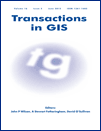
Transactions in GIS
Scope & Guideline
Innovating Methodologies for Earth and Planetary Sciences
Introduction
Aims and Scopes
- Geospatial Data Analysis:
The journal emphasizes the analysis of geospatial data using various statistical and computational techniques to derive meaningful insights from complex datasets. - Spatial Decision Support Systems:
It covers the development and application of systems that assist in decision-making processes involving spatial data, particularly in urban planning, disaster management, and resource allocation. - Integration of AI and Machine Learning:
There is a strong focus on integrating artificial intelligence and machine learning techniques with GIS to enhance data analysis capabilities and predictive modeling. - Remote Sensing and Earth Observation:
The journal publishes research on remote sensing methodologies and applications, including the use of satellite imagery and aerial data for environmental monitoring and urban studies. - Public Health and Social Sciences Applications:
Research targeting public health, social dynamics, and community engagement through spatial analysis is a consistent theme, showcasing the journal's interdisciplinary reach. - 3D GIS and Modeling:
Advances in three-dimensional modeling and visualization techniques for urban environments and natural landscapes are highlighted, reflecting the journal's commitment to cutting-edge spatial technologies.
Trending and Emerging
- Smart Cities and Urban Analytics:
Research focusing on the application of GIS in smart city initiatives and urban analytics is gaining momentum, highlighting the integration of technology in urban planning and management. - Machine Learning in Spatial Analysis:
The integration of machine learning techniques into spatial analysis is increasingly prevalent, as researchers explore new ways to analyze and interpret large geospatial datasets. - Social Media and Geospatial Data:
The use of social media data for spatial analysis, particularly in understanding public sentiment and behavior, has become a significant theme, reflecting its relevance in contemporary research. - Disaster Management and Emergency Response:
There is a growing emphasis on the application of GIS in disaster response and management, particularly in the context of climate change and urban resilience. - Environmental and Sustainability Studies:
Research addressing environmental issues and sustainability through GIS is on the rise, showcasing the journal's commitment to addressing global challenges. - Interactive and Participatory GIS:
The trend towards interactive and participatory GIS approaches is becoming more prominent, with studies focusing on community engagement and collaborative mapping.
Declining or Waning
- Traditional Cartography:
There is a noticeable decline in papers focused on traditional cartographic techniques, as the field shifts towards more dynamic and interactive mapping technologies. - Basic GIS Applications:
Research that merely applies basic GIS techniques without integrating advanced methodologies or interdisciplinary approaches is becoming less common. - Static Spatial Models:
The use of static spatial models, which do not account for temporal dynamics or real-time data, is waning as the demand for more dynamic and responsive models increases. - Low-Resolution Geospatial Data:
The emphasis has shifted away from low-resolution data applications, with a greater focus on high-resolution and real-time data sources. - Non-Quantitative Approaches:
There is a decrease in non-quantitative approaches to spatial analysis, as the field increasingly values data-driven and empirical methodologies.
Similar Journals

South African Journal of Geomatics
Exploring the Frontiers of Geographic Information ScienceSouth African Journal of Geomatics is a pivotal platform dedicated to the advancement of geomatics, focusing on the dynamic intersection of geographic information science, surveying, and mapping technologies. Published by CONSAS CONFERENCE, the journal serves as a crucial resource for researchers, professionals, and students in the geomatics field, providing insightful, peer-reviewed articles that explore contemporary challenges and innovations. Operating under an open-access model, the journal ensures the wide dissemination of knowledge, promoting collaboration and scholarly exchange among the global geomatics community. With a commitment to enhancing the visibility of significant research and fostering academic discourse, the South African Journal of Geomatics plays a vital role in contributing to the development of this essential discipline in South Africa and beyond.

Journal of Geovisualization and Spatial Analysis
Fostering Collaboration in the World of Spatial DataJournal of Geovisualization and Spatial Analysis, published by SpringerNature, is an influential open-access journal specializing in the cutting-edge fields of geovisualization, spatial analysis, and their application in earth sciences and geography. Since its inception in 2017, this journal has established a prominent stance with a high impact factor and prestigious Q1 rankings across multiple categories, including Computers in Earth Sciences, Earth and Planetary Sciences (miscellaneous), and Geography, Planning and Development. The editorial board is committed to advancing innovative research and methodologies, providing a platform for scholars to disseminate their findings globally. With impressive Scopus rankings—placing it in the top percentiles among its peers—the journal serves as a vital resource for researchers, professionals, and students keen on understanding spatial data and its implications for geographic science. Its emphasis on rigorous peer review and rapid publication enhances accessibility to substantive research, thus fostering knowledge sharing within the scientific community. Based in Switzerland, the journal promotes a collaborative environment for interdisciplinary studies, making it an essential read for anyone involved in spatial analysis research.

GEOINFORMATICA
Innovating Research in Spatial Data AnalysisGEOINFORMATICA is a leading journal in the field of geoinformatics, widely recognized for its contributions to both Geography, Planning and Development as well as Information Systems. Published by Springer, this journal holds a distinguished Q1 ranking in Geography and a Q2 ranking in Information Systems as of 2023, reflecting its high-impact research contributions and authoritative voice in these disciplines. Since its inception in 1997, GEOINFORMATICA has provided a platform for innovative research, methodologies, and applications related to geographic information science, spatial data analysis, and remote sensing technologies. The journal's rigorous peer-review process and strategic positioning within the academic landscape allow it to attract a diverse array of publications, assisting researchers, professionals, and students in understanding complex spatial phenomena. While the journal does not offer Open Access, it remains a vital resource located in the Netherlands, and its indexed status has secured impressive Scopus rankings—#131 in Geography, Planning and Development, and #134 in Information Systems, showcasing its robust scholarly influence. Explore the latest developments and cutting-edge research through GEOINFORMATICA, where scholarly excellence converges with real-world relevance.
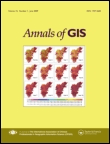
Annals of GIS
Connecting Research and Real-World ApplicationsWelcome to the Annals of GIS, a leading academic journal published by Taylor & Francis Ltd, dedicated to advancing the field of Geographic Information Science and its applications. With an ISSN of 1947-5683 and an E-ISSN of 1947-5691, this Open Access journal has been ensuring wide accessibility since 2019, thereby bolstering the dissemination of knowledge in areas such as remote sensing, spatial analysis, and geoinformatics. Hailing from the United Kingdom, the journal ranks impressively within its categories, achieving a Q2 status in Computer Science Applications and a prestigious Q1 ranking in Earth and Planetary Sciences for 2023, placing it in the top 10% among its peers. With a focus on innovative research spanning from 2009 to 2024, the Annals of GIS serves as a vital platform for researchers, professionals, and students alike, providing insights and fostering discussions that push the boundaries of geographic technologies and their real-world applications.

Geographia Technica
Pioneering Insights into Socio-Environmental InteractionsGeographia Technica is an esteemed academic journal published by GEOGRAPHIA TECHNICA ASSOCIATION - GT Assoc in Romania, serving as a vital platform for the dissemination of cutting-edge research in the interdisciplinary fields of geography, planning, and earth sciences. Since its inception in 2009 and continuing through to 2024, the journal has established itself as a respected source of knowledge, reflected in its classification within the Q3 category across significant fields such as Computers in Earth Sciences, Earth-Surface Processes, and Geography, Planning and Development. With the ambition to enhance the understanding of socio-environmental interactions and technological applications in these areas, Geographia Technica invites scholars and practitioners to contribute original research that pushes the boundaries of current knowledge. Although currently not listed as open access, the journal's engaging content ensures it remains a valuable resource for researchers, professionals, and students keen on advancing their expertise in these dynamic disciplines.
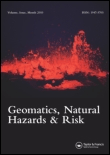
Geomatics Natural Hazards & Risk
Uncovering Insights into Natural Disasters and Risk MitigationGeomatics Natural Hazards & Risk, published by TAYLOR & FRANCIS LTD, is a premier open-access journal that has been at the forefront of interdisciplinary research since 2010, addressing critical issues related to natural hazards and environmental risk management. With an impressive impact factor and ranking in the Q1 quartile in both Earth and Planetary Sciences and Environmental Science categories, this journal serves as a vital platform for researchers, professionals, and students dedicated to advancing knowledge in these fields. The journal's commitment to open access since 2016 ensures that its high-quality research is readily available to a global audience, fostering collaboration and innovation. Located in the United Kingdom, Geomatics Natural Hazards & Risk encompasses a broad scope of studies including geospatial technologies, risk assessment methodologies, and the societal impacts of natural disasters, making it an essential resource for anyone involved in the investigation and mitigation of natural hazards.

Geomatik
Bridging disciplines with cutting-edge geospatial insights.Geomatik is a pioneering open-access journal dedicated to advancing the field of geomatics, encompassing disciplines such as geospatial data analysis, remote sensing, and geographic information systems. Founded in 2016 by the esteemed Geomatik Journal publisher, this peer-reviewed platform aims to disseminate high-quality research and innovative methodologies to a global audience. With its E-ISSN 2564-6761, Geomatik facilitates accessibility to cutting-edge studies that address vital challenges in environment monitoring, urban planning, and spatial data management. The journal not only encourages collaboration among researchers and practitioners but also serves as an essential resource for students seeking to deepen their understanding of geomatic sciences. Its commitment to open access fosters scholarly exchange and enhances visibility for authors, contributing to significant advancements within the geomatics community.
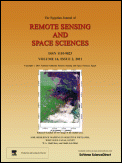
Egyptian Journal of Remote Sensing and Space Sciences
Pioneering Research for a Deeper Understanding of Our UniverseThe Egyptian Journal of Remote Sensing and Space Sciences, published by Elsevier, is a premier open-access journal dedicated to advancing the fields of Remote Sensing and Space Sciences. Since its inception, the journal has gained a prominent reputation, currently holding a prestigious Q1 ranking in Earth and Planetary Sciences and placing within the top 10% of its field according to Scopus metrics. With an ISSN of 1110-9823 and an E-ISSN of 2090-2476, the journal features a diverse range of scholarly articles that explore both theoretical and practical aspects of remote sensing technologies and space science innovations, thus appealing to researchers, professionals, and students alike. Established in 2003 and fully transitioning to an open-access model in 2010, the journal aims to disseminate knowledge and foster collaboration across the globe by providing wider accessibility to groundbreaking research findings. Its commitment to quality and innovation is a catalyst for intellectual development in these dynamic and evolving disciplines.

Earth Science Informatics
Fostering Scientific Discovery in Earth and Planetary Sciences.Earth Science Informatics, published by SPRINGER HEIDELBERG, serves as a premier platform for disseminating innovative research in the realm of Earth and Planetary Sciences. With an ISSN of 1865-0473 and an E-ISSN of 1865-0481, this journal offers insightful contributions that leverage informatics and data-driven approaches to address complex geoscientific challenges. As a testament to its impact in the field, it ranks in the Q2 quartile and holds an impressive 73rd percentile rank among 195 journals in the broader **Earth and Planetary Sciences** category, as per Scopus rankings. This journal invites researchers, professionals, and students to explore and contribute to the growing body of knowledge that bridges the gap between informatics and Earth science, fostering advancements in both theoretical frameworks and practical applications. Situated in Germany, at TIERGARTENSTRASSE 17, D-69121 HEIDELBERG, it aims to enhance interdisciplinary collaboration and propel scientific discovery from 2009 to 2024 and beyond, reinforcing its vital role in the academic community.
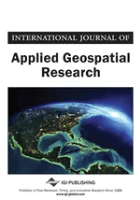
International Journal of Applied Geospatial Research
Navigating the future of geography and Earth sciences.International Journal of Applied Geospatial Research is an esteemed publication dedicated to advancing the field of geospatial research. Published by IGI Global, this journal provides a platform for innovative studies from 2010 to 2024 that encourage multidisciplinary contributions across Earth and planetary sciences and geography. While currently not offering open access, the journal's focus on applied research ensures that it remains highly relevant to both academics and industry professionals alike. With an ISSN of 1947-9654 and an E-ISSN of 1947-9662, it has been indexed in various databases, reflecting its emerging significance with rankings such as Q4 in Earth and Planetary Sciences and Geography according to Scopus, placing it at the intersection of critical research and practical application. Researchers, professionals, and students can expect insightful articles that enhance understanding and drive innovation in geospatial applications essential for informed decision-making in a rapidly changing world.